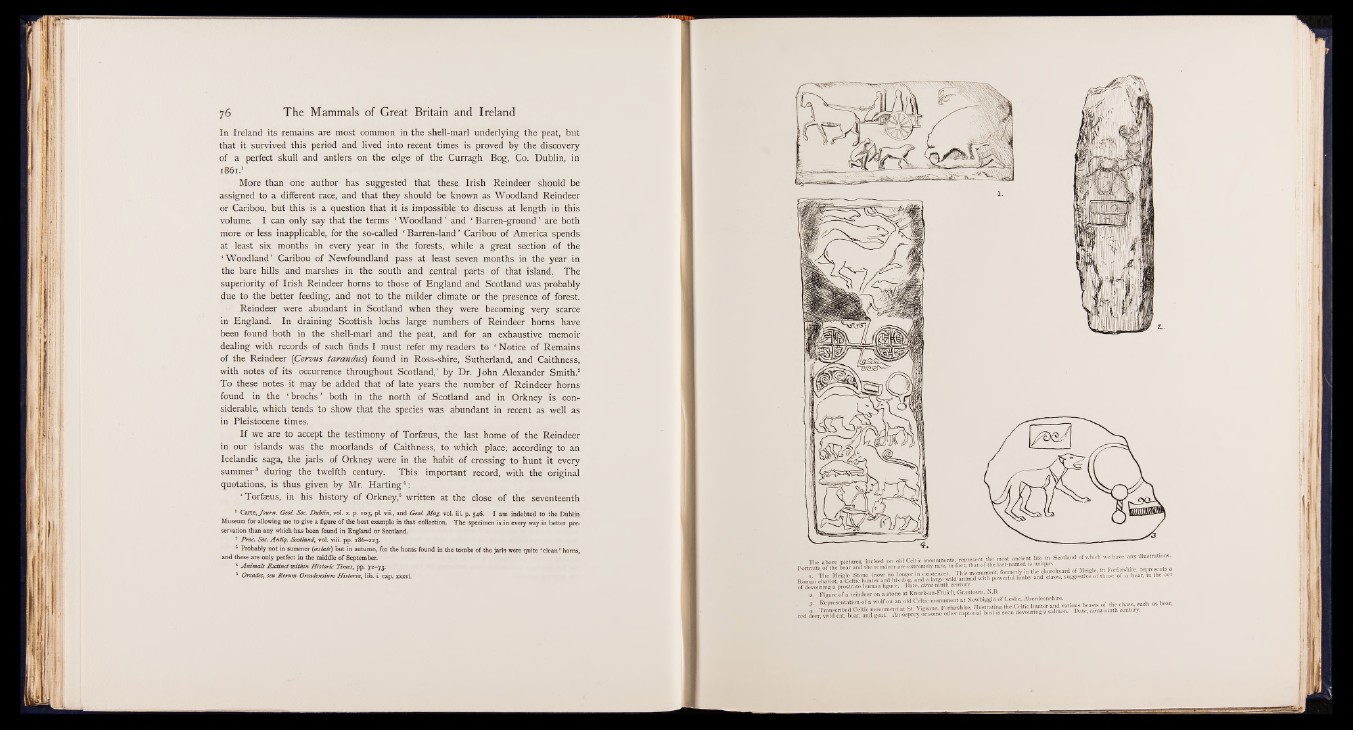
The Mammals of Great 76 Britain and Ireland
In Ireland its remains are most common in the shell-marl underlying the peat, but
that it survived this period and lived into recent times is proved by the discovery
of a perfect skull and antlers on the edge of the Curragh Bog, Co. Dublin, in
1861.1
More than one author has suggested that these Irish Reindeer should be
assigned to a different race, and that they should be known as Woodland Reindeer
or Caribou, but this is a question that it is impossible to discuss at length in this
volume. I can only say that the terms * Woodland ’ and ‘ Barren-ground ’ are both
more or less inapplicable, for the so-called ‘ Barren-land ’ Caribou of America spends
at least six months in every year in the forests, while a great section of the
‘ Woodland ’ Caribou of Newfoundland pass at least seven months in the year in
the bare hills and marshes in the south and central parts of that island. The
superiority of Irish Reindeer horns to those of England and Scotland was probably
due to the better feeding, and not to the milder climate or the presence of forest.
Reindeer were abundant in Scotland when they were becoming very scarce
in England. In draining Scottish lochs large numbers of Reindeer horns have
been found both in the shell-marl and the peat, and for an exhaustive memoir
dealing with records of such finds I must refer my readers to ‘ Notice of Remains
of the Reindeer (Cervus tarandui) found in Ross-shire, Sutherland, and Caithness,
with notes of its occurrence throughout Scotland,’ by Dr. John Alexander Smith.2
To these notes it may be added that of late years the number of Reindeer horns
found in the ‘ brochs’ both in the north of Scotland and in Orkney is considerable,
which tends to show that the species was abundant in recent as well as
in Pleistocene times.
I f we are to accept the testimony of Torfaeus, the last home of the Reindeer
in our islands was the moorlands of Caithness, to which place, according to an
Icelandic saga, the jarls of Orkney were in the habit of crossing to hunt it every
summer3 during the twelfth century. This important record, with the original
quotations, is thus given by Mr. Harting4:
‘ Torfaeus, in his history of Orkney,6 written at the close of the seventeenth
1 Caite,Joum . Geo/. Soc. Dublin, vol. x. p. 103, pL vii., and Geol Mag. vol. iii. p. 546. I am indebted to the Dublin
Museum for allowing me to give a figure of the best example in that collection. The specimen is in every way in better preservation
than any which has been found in England or Scotland.
* Proc. Soc. Antiq. Scotland,, voL viii. pp. 186-223.
* Probably not in summer (testate) but in autumn, for the horns found in the tombs of the jarls were quite ‘ clean’ horns,
and these are only perfect in the middle of September.
4 Animals E xtinct within Historic Times, pp. 72-73.
8 Orcades, seu Return Orcadensium Historia, lib. i. cap. xxxvi.